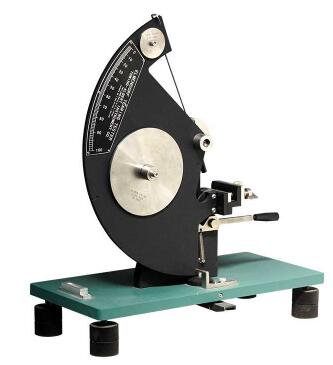-
How can I tell if the tearing strength tester is not performing accurately?
Edited by:Read:To determine if a tearing strength tester is not performing accurately, you can consider the following factors:
1. Calibration: Check if the tearing strength tester has been calibrated recently. Regular calibration ensures that the instrument is measuring accurately. If it hasn't been calibrated within the recommended timeframe, it may lead to inaccurate results.

2. Maintenance: Ensure that the tearing strength tester is well-maintained. Check for any signs of wear and tear, loose components, or damage that could affect its performance. Regular cleaning and servicing are essential to keep the instrument in optimal condition.
3. Standardization: Verify if the tearing strength tester is standardized according to recognized industry standards. This ensures that the instrument is calibrated against a known reference material, allowing for accurate and consistent measurements.
4. Sample Preparation: Proper sample preparation is crucial for accurate results. Ensure that the samples are cut or prepared according to the specified dimensions and guidelines. Any deviations in sample preparation can affect the tearing strength measurement.
5. Testing Conditions: Pay attention to the testing conditions, such as temperature and humidity. These factors can impact the tearing strength of materials. Make sure the testing environment is controlled and consistent to obtain reliable results.
6. Operator Technique: The operator's technique can also influence the accuracy of the tearing strength tester. Ensure that the operator is trained on the proper usage of the instrument and follows the recommended testing procedures. Consistency in the application of force and alignment of the sample can significantly impact the results.
7. Reproducibility: Perform multiple tests on the same sample to check for reproducibility. If the tearing strength measurements vary significantly, it may indicate an issue with the instrument's accuracy.
8. Comparison with Reference Materials: Use reference materials with known tearing strength values to verify the accuracy of the tearing strength tester. If the instrument consistently provides results that deviate from the expected values, it may indicate a problem with its accuracy.
9. Quality Control: Implement a robust quality control system to monitor the performance of the tearing strength tester over time. Regularly test control samples with known tearing strength values to ensure the instrument's accuracy and reliability.
If you suspect that the tearing strength tester is not performing accurately after considering these factors, it is recommended to contact the manufacturer or a qualified technician for further assistance. They can provide guidance on troubleshooting the instrument or performing necessary repairs.
- 2024-04-19Paper ring compression strength tester standards
- 2024-04-19Cupping tester standards
- 2024-04-19Rubber and plastic tensile tester standards
- 2024-04-19Taber 1750 wear-resistant tester standards
- 2024-04-19Stone Chip Resistance Gravelometer standards
- 2024-04-18Diaper absorption speed tester standards
- 2024-04-18Diaper leakage tester technical indicators
- 2024-04-18Paint film impact resistance tester standards
- 2024-04-18Low temperature brittleness tester principle
- 2024-04-18Battery separator permeability tester technical indicators



